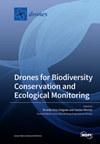Exploring Meteorological Conditions and Microscale Temperature Inversions above the Great Barrier Reef through Drone-Based Measurements
IF 4.4
2区 地球科学
Q1 REMOTE SENSING
引用次数: 0
Abstract
Understanding the atmospheric conditions in remote areas contributes to assessing local weather phenomena. Obtaining vertical profiles of the atmosphere in isolated locations can introduce significant challenges for the deployment and maintenance of equipment, as well as regulatory obstacles. Here, we assessed the potential of consumer drones equipped with lightweight atmospheric sensors to collect vertical meteorological profiles off One Tree Island (Great Barrier Reef), located approximately 85 km off the east coast of Australia. We used a DJI Matrice 300 drone with two InterMet Systems iMet-XQ2 UAV sensors, capturing data on atmospheric pressure, temperature, relative humidity, and wind up to an altitude of 1500 m. These flights were conducted three times per day (9 a.m., 12 noon, and 3 p.m.) and compared against ground-based weather sensors. Over the Austral summer/autumn, we completed 72 flights, obtaining 24 complete sets of daily measurements of atmospheric characteristics over the entire vertical profile. On average, the atmospheric temperature and dewpoint temperature were significantly influenced by the time of sampling, and also varied among days. The mean daily temperature and dewpoint temperature reached their peaks at 3 p.m., with the temperature gradually rising from its morning low. The mean dewpoint temperature obtained its lowest point around noon. We also observed wind speed variations, but changes in patterns throughout the day were much less consistent. The drone-mounted atmospheric sensors exhibited a consistent warm bias in temperature compared to the reference weather station. Relative humidity showed greater variability with no clear bias pattern, indicating potential limitations in the humidity sensor’s performance. Microscale temperature inversions were prevalent around 1000 m, peaking around noon and present in approximately 27% of the profiles. Overall, the drone-based vertical profiles helped characterise atmospheric dynamics around One Tree Island Reef and demonstrated the utility of consumer drones in providing cost-effective meteorological information in remote, environmentally sensitive areas.通过无人机测量探索大堡礁上空的气象条件和微尺度温度反常现象
了解偏远地区的大气状况有助于评估当地的天气现象。在孤立的地点获取大气的垂直剖面可能会给设备的部署和维护带来重大挑战,以及监管障碍。在这里,我们评估了配备轻型大气传感器的消费级无人机在距离澳大利亚东海岸约85公里的One Tree Island(大堡礁)收集垂直气象剖面的潜力。我们使用了一架带有两个InterMet Systems iMet-XQ2无人机传感器的大疆matrix 300无人机,捕获了海拔1500米的大气压力、温度、相对湿度和风的数据。这些飞行每天进行三次(上午9点,中午12点和下午3点),并与地面气象传感器进行比较。在南半球的夏季和秋季,我们完成了72次飞行,在整个垂直剖面上获得了24套完整的每日大气特征测量数据。平均而言,大气温度和露点温度受采样时间的影响显著,且随采样时间的变化而变化。日平均气温和露点温度在下午3点达到峰值,从早上的低点逐渐上升。平均露点温度在中午左右达到最低点。我们也观察到风速的变化,但全天的变化模式不太一致。与参考气象站相比,无人机安装的大气传感器在温度上表现出一致的暖偏。相对湿度表现出较大的变异性,但没有明显的偏置模式,这表明湿度传感器的性能存在潜在的局限性。微尺度温度逆温在1000米左右普遍存在,在中午左右达到峰值,约占剖面的27%。总体而言,基于无人机的垂直剖面有助于描述One Tree Island Reef周围的大气动力学特征,并展示了消费级无人机在偏远、环境敏感地区提供具有成本效益的气象信息方面的实用性。
本文章由计算机程序翻译,如有差异,请以英文原文为准。
求助全文
约1分钟内获得全文
求助全文

 求助内容:
求助内容: 应助结果提醒方式:
应助结果提醒方式:


